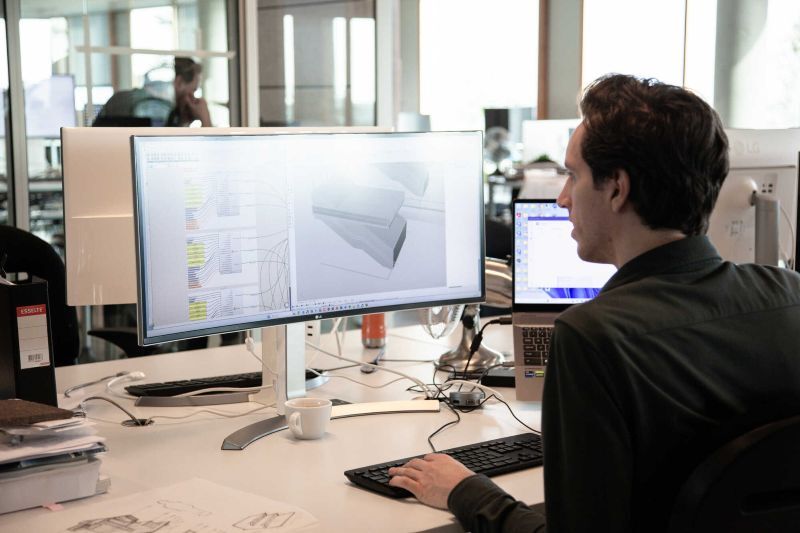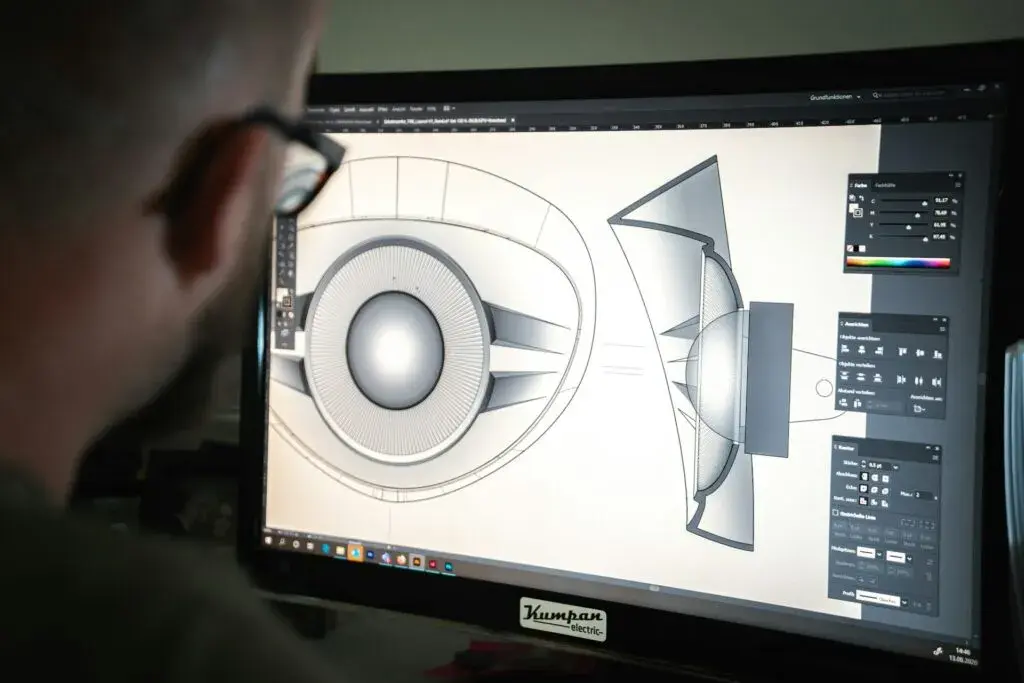
The construction and design sector is evolving at the fastest rate ever before. The traditional CAD designers who concentrate mostly on 2D drafting and 3D views are at a crossroads in their careers. Due to the influence of AI, automation, and sustainability, the built environment is now an issue many professionals consider in terms of alternative career paths for CAD designers.
One of the most rewarding paths is to upskill as a CAD designer by learning computational design skills. In contrast to a more traditional drafting process, computational design seeks to integrate data, logic, and automation to design flexible models that react to constraints of the real world. Parametric design in architectural work and other complicated engineering systems promises superior results, drafting adaptations, and work processes.
For professionals looking to stay competitive and increase their CAD designer salary, mastering these tools is no longer optional; it’s essential. Recent trends in the job market are that the United States and Canada expect a significant rise in employment opportunities related to CAD up to 2025 due to the demand for specialists capable of high-impact designs with high professional productivity.
CAD Designer vs. Parametric Designer
Before diving into the skills, let’s understand how the two roles differ.
|
Aspect |
CAD Designer |
Parametric Designer |
|
Approach |
Manual 2D/3D drafting with CAD designer software |
Algorithm-driven, rule-based modeling |
|
Efficiency |
Repetitive tasks, manual edits |
Automated workflows, rapid iteration |
|
Flexibility |
Static models with limited adaptability |
Dynamic models that respond to parameters |
|
Integration |
Mostly limited to drawings |
Linked to BIM process automation, fabrication, and simulations |
|
Collaboration |
Shares files in isolated formats |
Works within integrated digital ecosystems for cross-team workflows |
|
Problem-Solving |
Relies on manual adjustments and trial-and-error |
Uses data-driven insights and adaptive algorithms |
|
Innovation |
Limited scope for experimenting |
Encourages experimentation, rapid prototyping, and design exploration |
|
Sustainability |
Focus mainly on compliance and constructability |
Optimises energy, material usage, and climate-responsive solutions |
|
Skillset |
CAD drafting, 2D/3D visualization |
Computational design, Python scripting, Rhino, Grasshopper, Dynamo |
|
Career Outlook |
Supportive documentation role |
Strategic specialist in high demand |
A parametric CAD drafter course that opens new doors to innovation-based employment in 2025. Whereas CAD designers will continue to be indispensable, the emergence of parametric designers plays a leadership role in promoting optimized, sustainable, and constructible solutions.
Why CAD Designers Need To Learn Parametric Design?

The move to computational workflows over traditional drafting occurs because of identifiable, quantifiable benefits.
- Speed & Efficiency – Fast, it eliminates any processes of drafting that are done regularly, like facade layouts, and instead takes hundreds of times less time on design.
- Design Optimization – Technology to generate hundreds of options of daylighting, airflow, or cost-effectivity and make evidence-based decisions.
- Data Integration – By providing a proliferation of structural, climate, and material information into the design.
- Sustainability – Computational design software facilitates the achievement of green certification and energy requirements.
- Collaboration – It is easily integrated with BIM automation tools and improves collaboration across disciplines.
- Future-Proofing Careers – Prepares designers for the new technologies, such as AI-enabled modeling
- Higher Earnings – The professionals with a computational design certificate usually have higher pay than those who can only exercise drafting.
For professionals weighing alternative career paths for CAD designers, computational design is the clear upgrade.
The Skills CAD Designers Need to Break Through—And What Top Employers Want
To move on to become a high-value computational designer rather than a traditional CAD drafter, professionals need to develop hard and soft skills. This is what the employers will expect in 2025:
Software Skills

In 2025, a competent professional will be expected by their employer to have familiarity with the latest computational design softwares. Core platforms consist of:
- Rhino 3D – The foundation of high-end modeling. To remain competitive, you must learn Rhino 3D at the intermediate to advanced level.
- Grasshopper 3D – Rhino’s parametric engine that allows rule-based design automation. To become a computational designer, you need to learn Grasshopper 3D thoroughly.
- Dynamo – A BIM process automation on a critical level, integrates into Revit as a way of streamlining documentation and clash detection.
- Python Scripting – Allows custom workflows, links the platforms, and even incorporates AI tools in design work.
Soft Skills
Beyond tools, top employers want designers who below skills:
- Analytical problem-solving – The ability to analyse complex data, identify patterns, and transform insights into practical design solutions, improving project outcomes.
- Collaboration – The ability to work in unity with the architects, engineers, and stakeholders, with a smooth communication channel, responsibility, and a successful implementation of multidisciplinary design projects.
- Adaptability – Being flexible on workflows, adopting new technologies, and promptly adapting to the dynamic industry trends to remain relevant and competitive.
In-Demand Specializations

Employers don’t just want tool users; they want specialists who can deliver impact. The most valued domains include:
- Facade Optimization – Climate-responsive facade optimization combines data-driven performance data with facade-level architectural and aesthetic considerations to meet the needs of a sustainable, high-performance building.
- Structural Rationalization – Structural rationalization simplifies the geometry of computational complex designs into an affordable and constructible design, thus improving constructability, material utilisation, and the overall project viability.
- BIM Automation – Using BIM automation tools, script customisation allows simplified workflows, reduced documentation errors, and reduced project delivery time savings.
Together, these skills help a CAD professional shift from routine drafting to strategic, project-shaping roles.
Where To Learn These Skills & Get Certified?
Individual study and decentralised learning can provide an introduction to tools, but do not usually include structure, direction, and accreditation. There is a computational design certificate that all employers recognize because it shows both technical and applied knowledge.
For CAD professionals willing to advance their careers, the Master Computational Design Course, created by Novatr, provides a comprehensive path to growth.
Course Highlights:
- Comprehensive Curriculum – Rhino, Grasshopper, Dynamo, Python scripting, real-world applications/solutions such as facade optimization, BIM automation.
- Hands-On Learning – Learn by doing projects where you would work with actual case scenarios, such as structural systems and parametric facades.
- Career-Ready Portfolio – Graduate with a portfolio that reflects advanced computational design skills for CAD designers, making you stand out in the job market.
- Industry Mentorship – Access to knowledge provided by world professionals who influence the AEC industry.
- Career Support – Attend job boards, networking events, and recruiting collaborations.
- Flexibility – Online modules designed for working professionals balancing careers with upskilling.
Compared to free tutorials, the program provides systematic learning with a professional qualification valid in the global job market. It is the quickest means to enhance and transition into other job avenues for CAD designers.
Conclusion
By 2025, the work of a CAD designer will not simply produce drawings anymore. Learning computational design skills in CAD design enables you to transform the role of a draftsperson to a strategist who influences sustainable, efficient, and innovative projects..
It can be through computational design using repetition (via computational design software to facilitate iterations quickly), BIM automation tools (accelerating delivery), or directing projects with facade optimization. The possibilities are huge. Training to the confidence and credibility levels must be through the right training, like a parametric CAD drafter course or a full-fledged computational design course.
If you’re ready to upskill, explore the Master in Computational Design Course. Visit the Novatr and our resource page for guides, certifications, and tools to help you build your future.
Your drafting skills built the foundation computational design will take your career to the next level.
Was this content helpful to you



.jpg)




